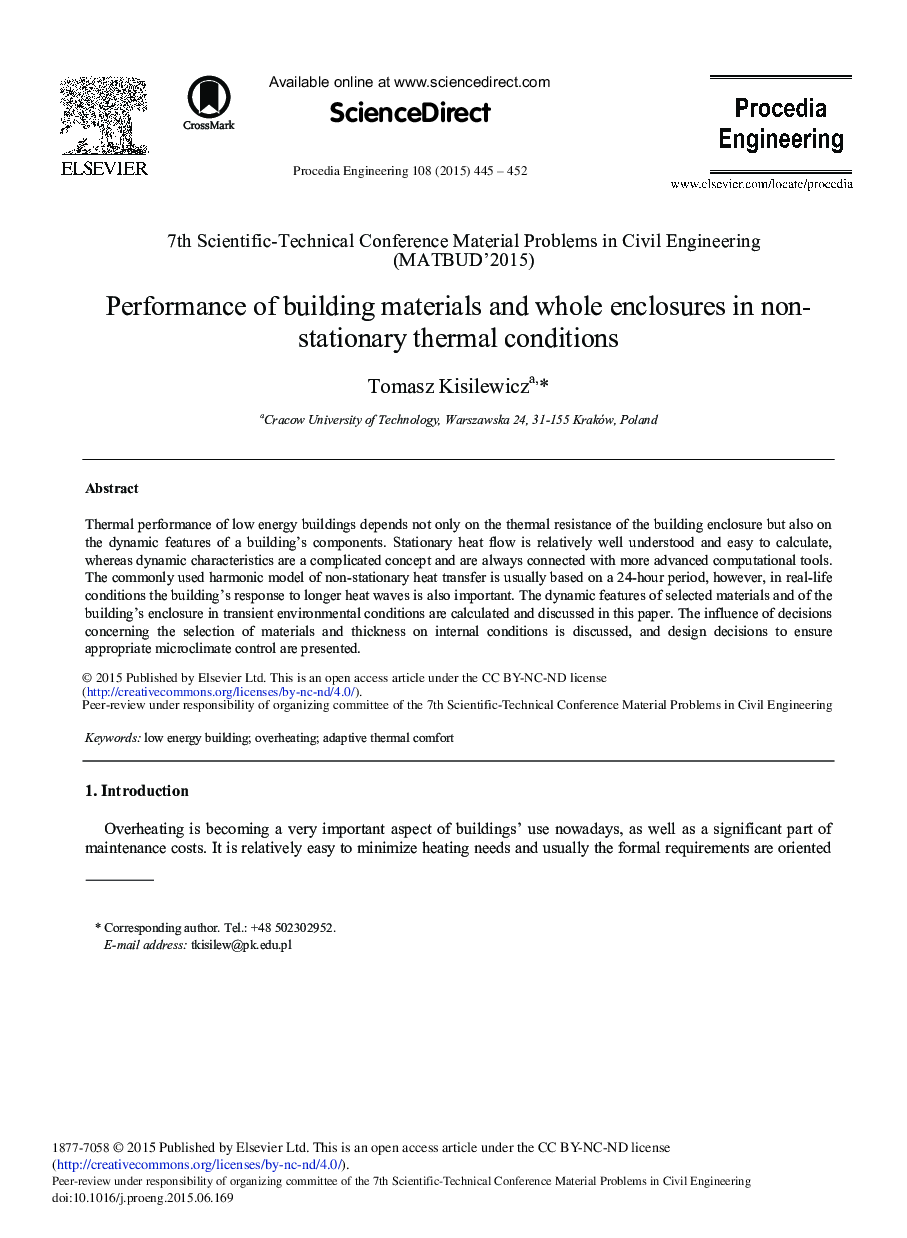| Article ID | Journal | Published Year | Pages | File Type |
|---|---|---|---|---|
| 856336 | Procedia Engineering | 2015 | 8 Pages |
Thermal performance of low energy buildings depends not only on the thermal resistance of the building enclosure but also on the dynamic features of a building's components. Stationary heat flow is relatively well understood and easy to calculate, whereas dynamic characteristics are a complicated concept and are always connected with more advanced computational tools. The commonly used harmonic model of non-stationary heat transfer is usually based on a 24-hour period, however, in real-life conditions the building's response to longer heat waves is also important. The dynamic features of selected materials and of the building's enclosure in transient environmental conditions are calculated and discussed in this paper. The influence of decisions concerning the selection of materials and thickness on internal conditions is discussed, and design decisions to ensure appropriate microclimate control are presented.
